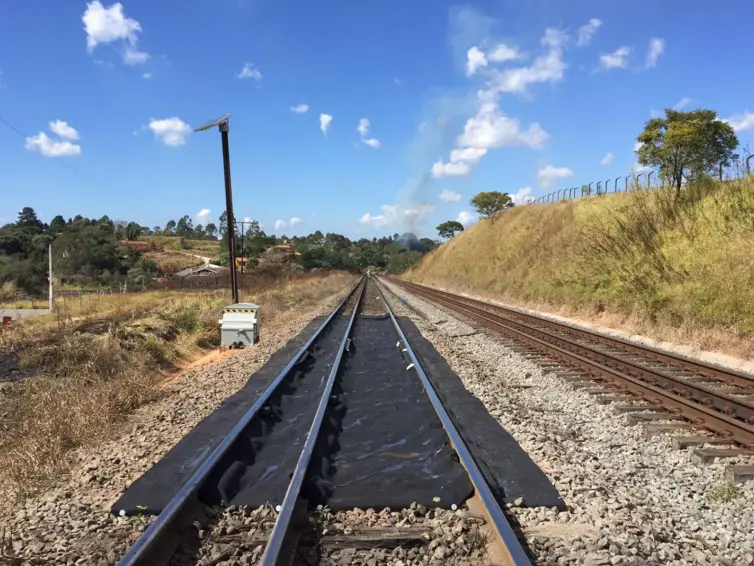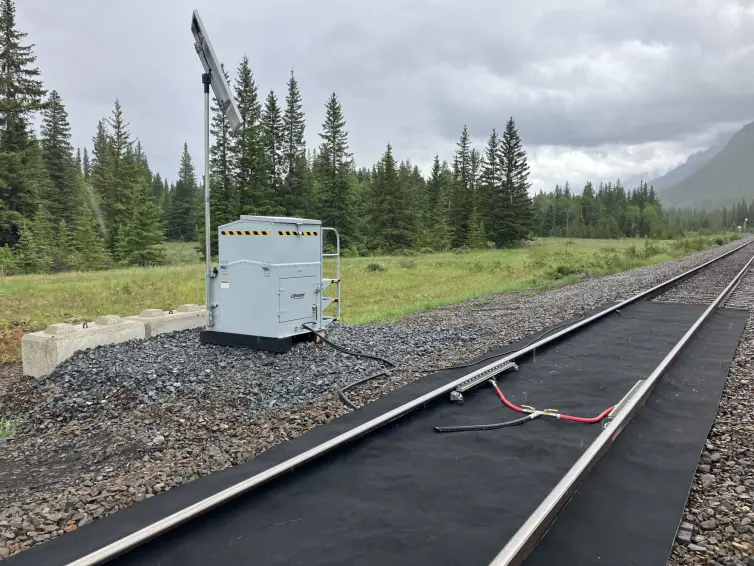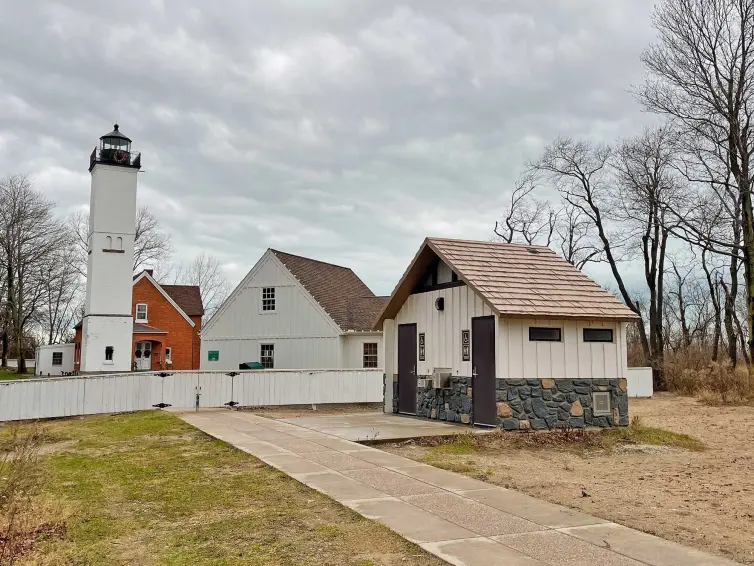Track to the power of three
- Aug 10, 2018
- Rail
L.B. Foster is developing a cost-effective friction management solution for dual gauge track applications. Here we look at a project in Brazil.
Brazilian railroads operate mainly on two different track gauges:
Broad gauge (1.60 m)
meter gauge (1.00 m).
In some areas, the different tracks overlap and produce a ‘dual gauge’ track. A dual gauge track consists of three rails, allowing the passage of trains of two different track gauges.
Today in Brazil there is 515 km of dual gauge track, divided between different operators. Two ‘gauge’ rails are positioned close together (one for each gauge) and a third ‘common’ rail further away. This means two different gauge trains can operate on the same track, avoiding the need to transfer the cargo to another train or a different mode of transport.
As friction management programs continue to expand in Brazil, local railroads have recognised the need to install gauge face and top of rail trackside friction management systems in dual gauge track territories.
Two major railroads plan to install units in dual gauge areas over the next few years. L.B. Foster, in collaboration with these customers, is working to develop a cost-effective friction management solution in areas of dual gauge track.
Renata do Carmo Santoro, L.B. Foster’s Technical Solutions Specialist for South America explains: “We are working in partnership with these two railroads to understand their need for a unit which can lubricate three rails per track, as well as precisely identify which gauge to lubricate at which time. As a result, we have applied our technical engineering excellence to re-engineer our existing equipment to meet the customer’s needs.”
Our unique Dual Gauge Trackside System project is currently in development. The first generation commercial product is scheduled to be ready by the end of the first quarter of 2018. Current development work is focused on how to quickly switch product flow from one gauge rail to the other, while reducing the power draw of the additional control and actuating components. Costs and development time can be significantly reduced by reconfiguring existing components for sensing and product distribution. The first dual track units are expected be installed by Brazilian railroads later in 2018



